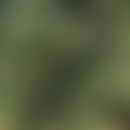Synonym(s)
DefinitionThis section has been translated automatically.
Woad is a biennial plant from the cruciferous family (Brassicaceae).
Originally native to western Asia, the plant has been cultivated in Europe for centuries. Indigo dye (indigo blue) was extracted from woad in Germany.
The plant reaches a height of 30 to 150 cm and forms leaf rosettes with 20 to 30 cm long, lanceolate, hairy leaves that are blue-green in color.
It flowers between May and July and produces yellow, rape-like flowers that develop into 0.4 to 1.0 cm large, oily fruits.
The leaves contain the colourless glycoside indican, which is enzymatically broken down into sugar and indoxyl after harvesting and oxidized to indigo (fermentation).
Naturopathy: Woad is the parent plant of Isatis radix, the dried root of the woad plant (off. Ph. Eur. 8). However, the leaves of the plant are also used for medicinal purposes.
Cosmetics: The pressed oil from woad (Isatis tincturia oil) is used in cosmetic formulations as an emollient.
LiteratureThis section has been translated automatically.
- Brattström A et al (2010) The plantextract Isatis tinctoria L. extract (ITE) inhibits allergen-induced airway inflammation and hyperreactivity in mice. Phytomedicine 17(8-9):551-556.
- Wang Y et al (2009) Synergistic effects of Isatis tinctoria L. and tacrolimus in the prevention of acute heart rejection in mice. Transpl Immunol 22(1-2):5-11.
- Recio MC et al (2006) Anti-arthritic activity of a lipophilic woad (Isatis tinctoria) extract. Planta Med 72:715-720.
- Recio MC et al.(2006) Anti-inflammatory and antiallergic activity in vivo of lipophilic Isatis tinctoria extracts andtryptanthrin. Planta Med 72:539-546.
- Zhou J et al (2011)Analysis of the extracts of Isatis tinctoria by new analytical approaches of HPLC, MS and NMR. Afr J Tradit Complement Altern Med 8(5 Suppl):33-45.



